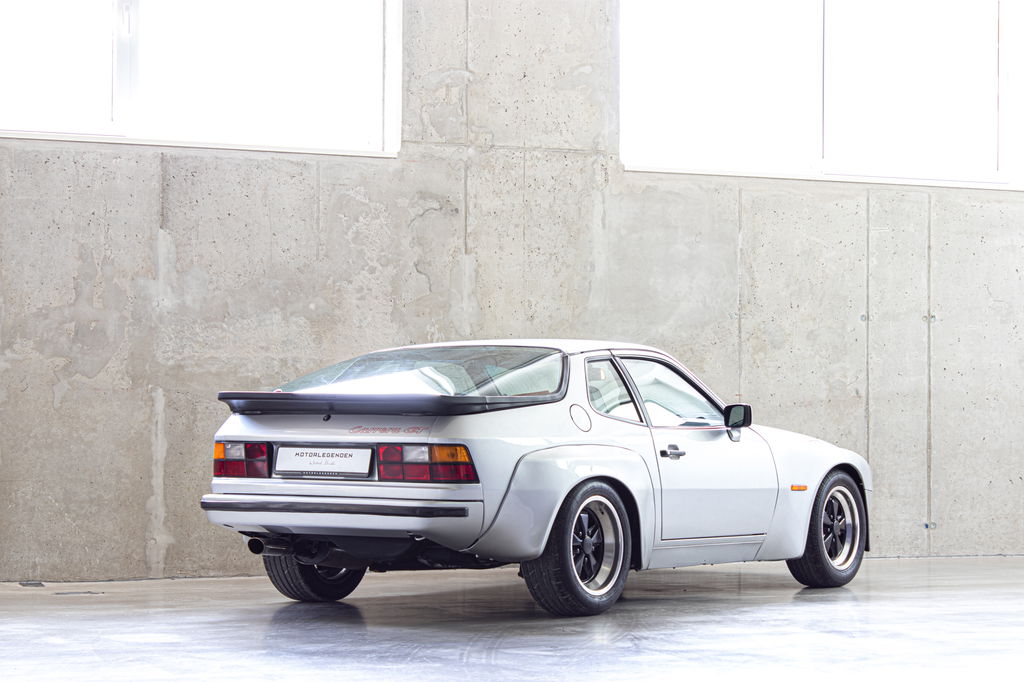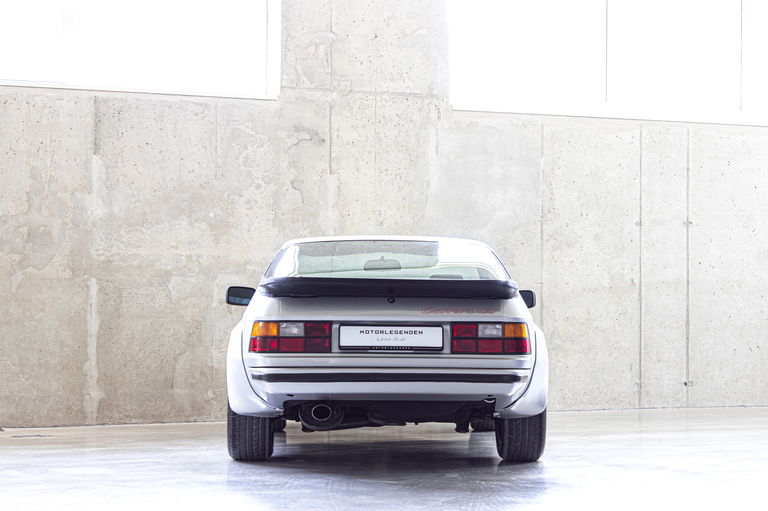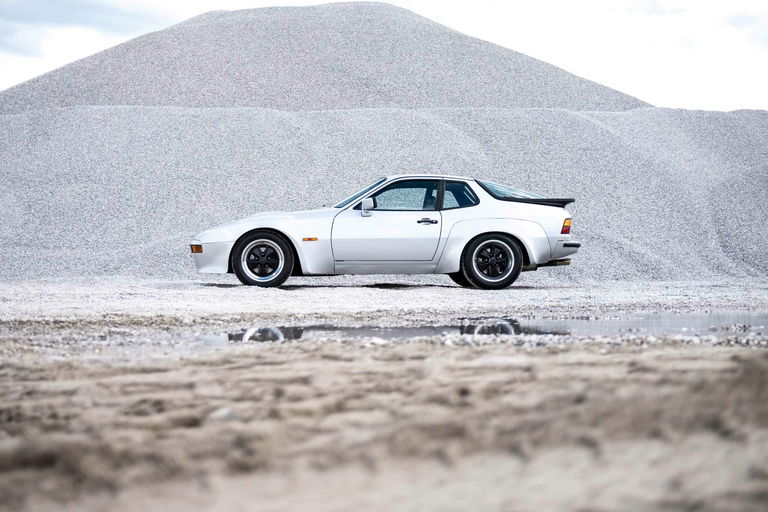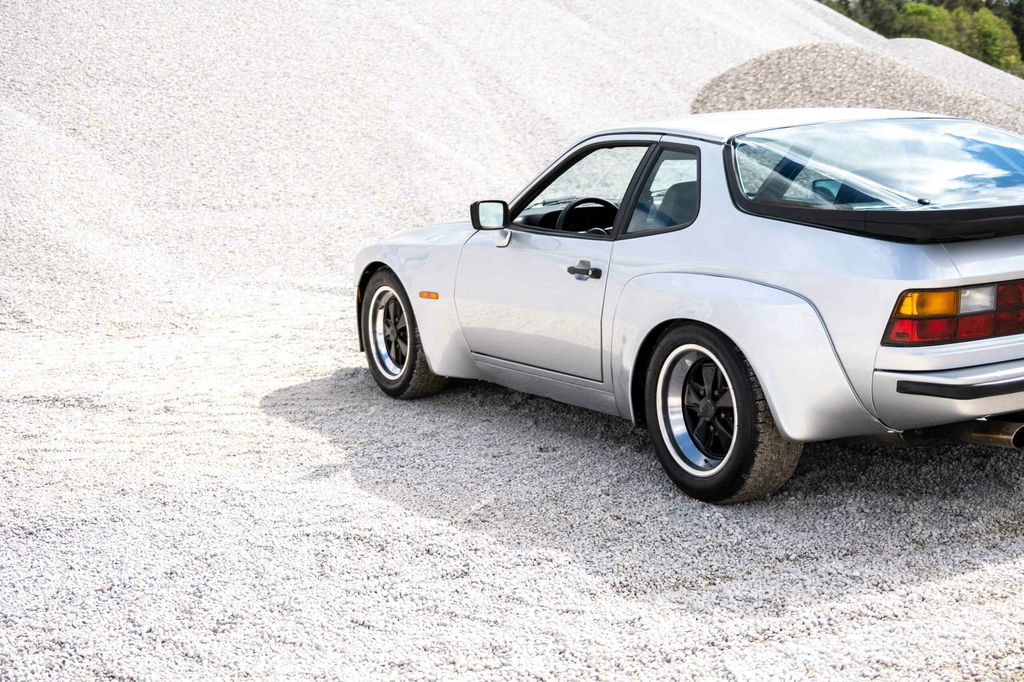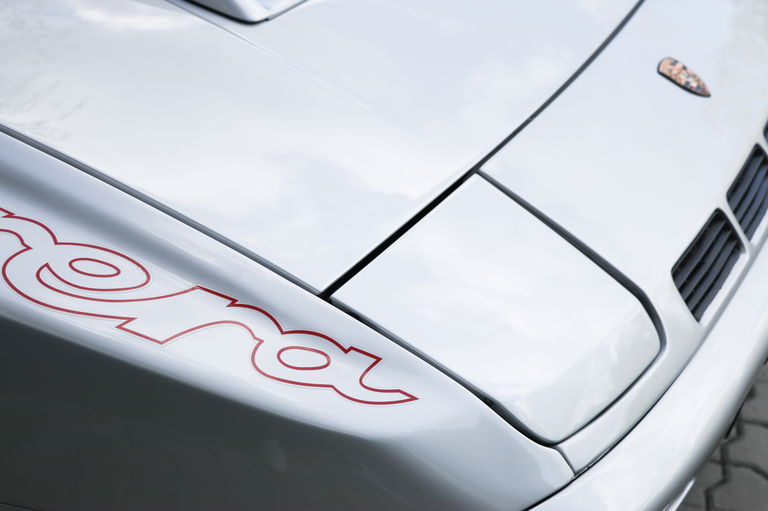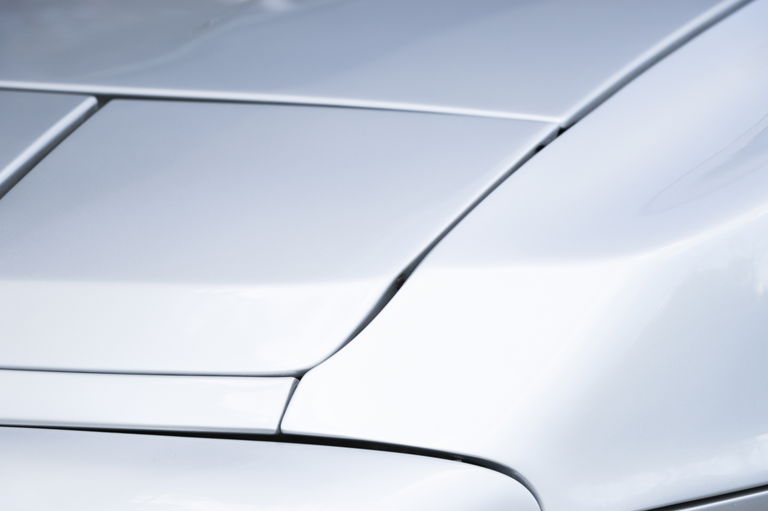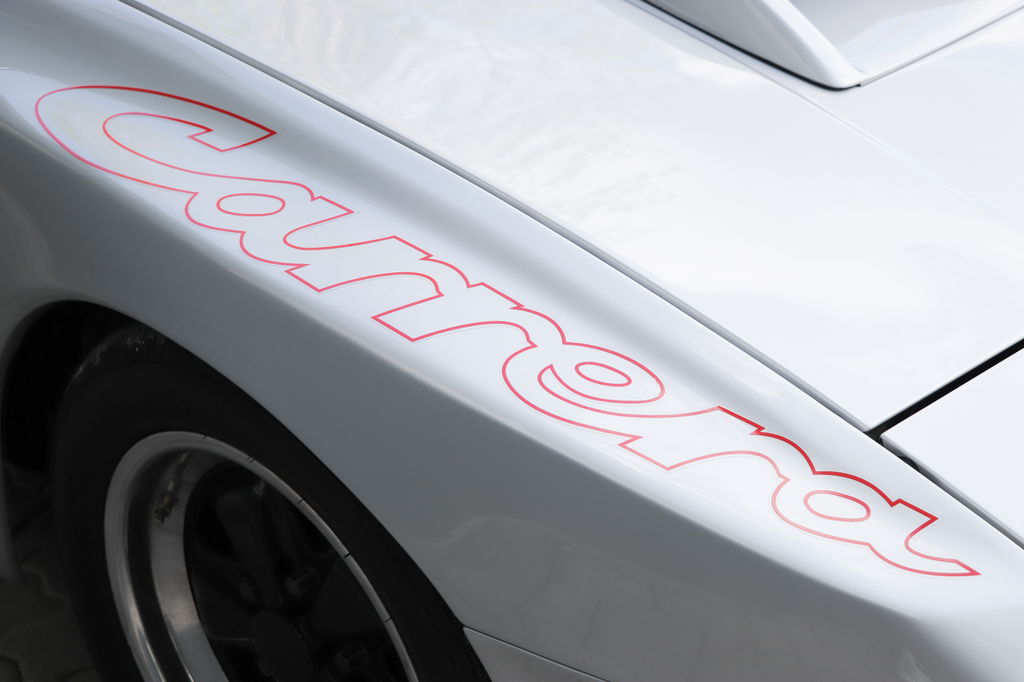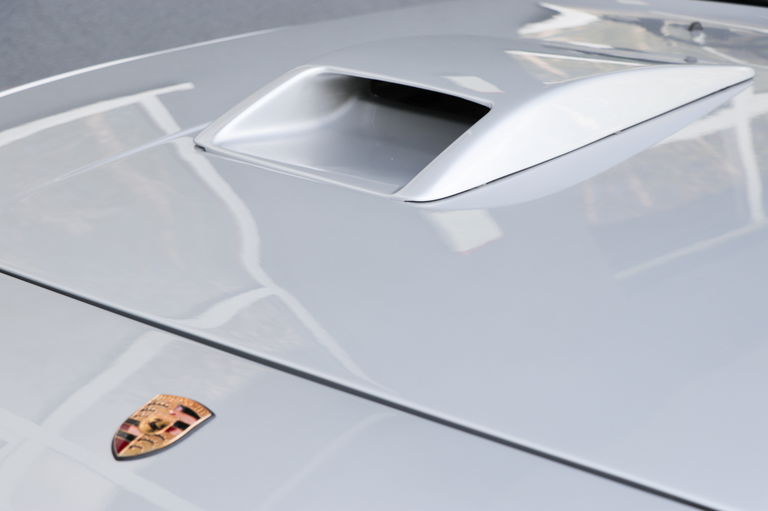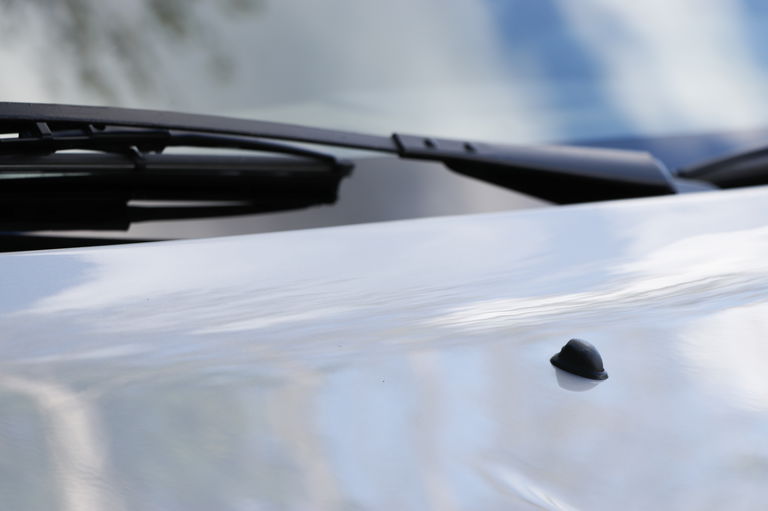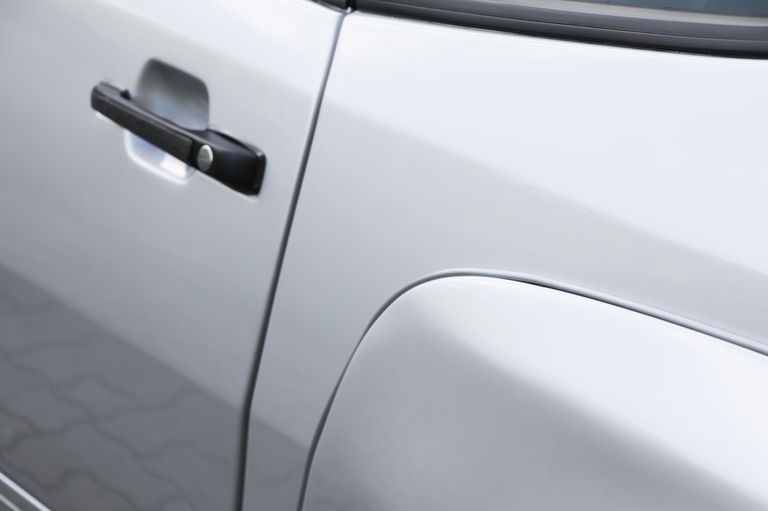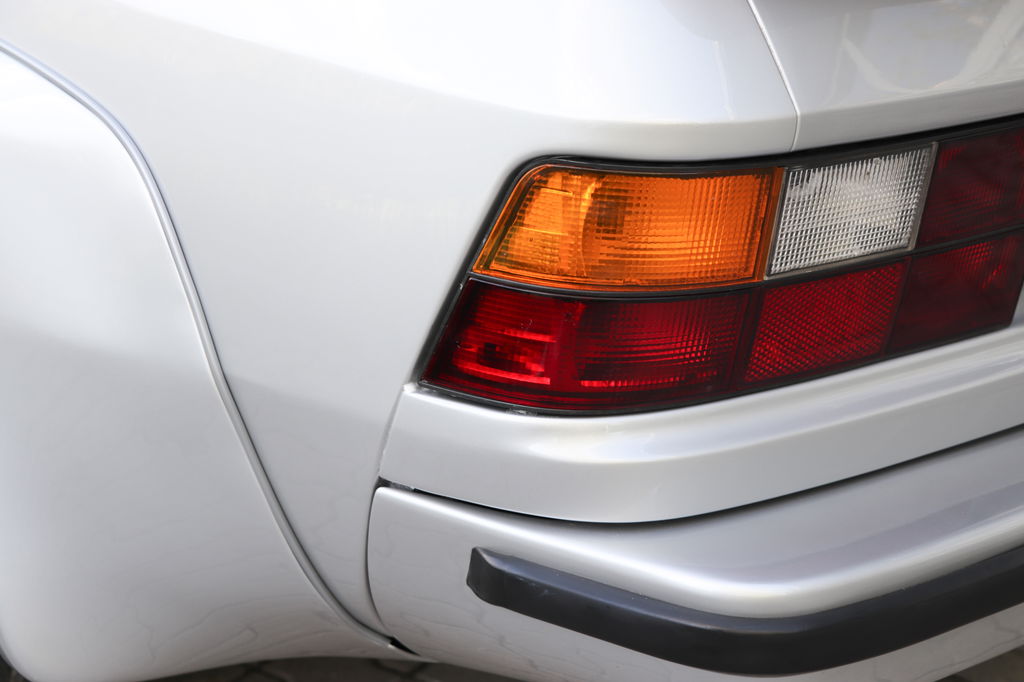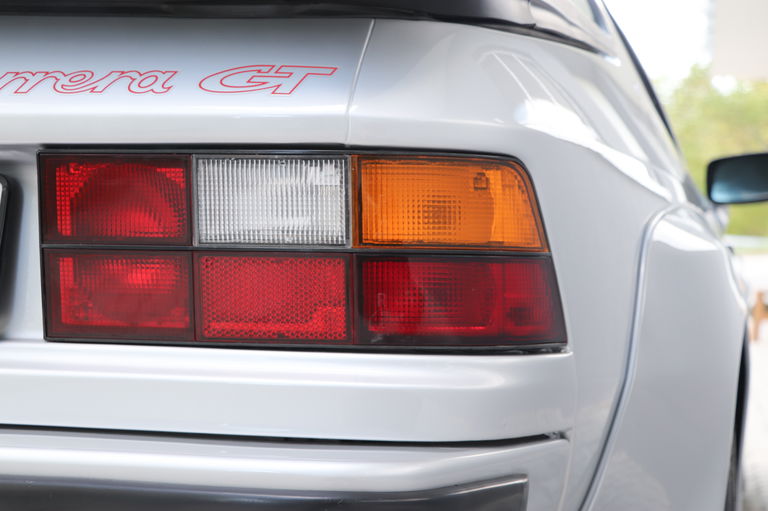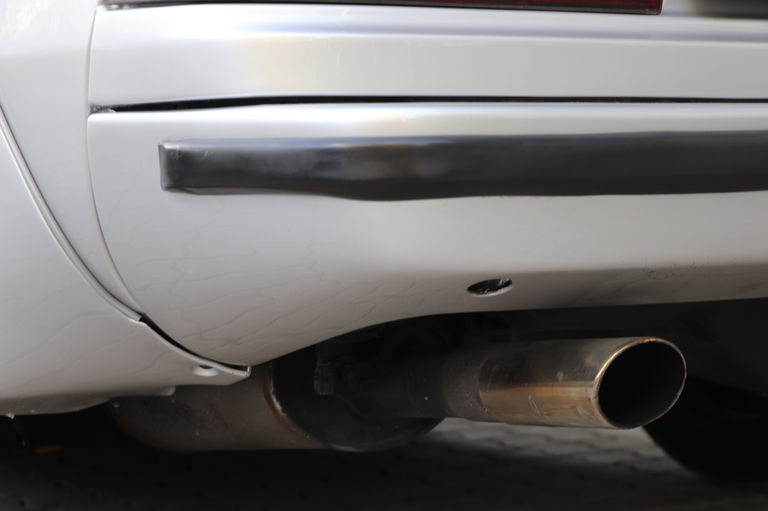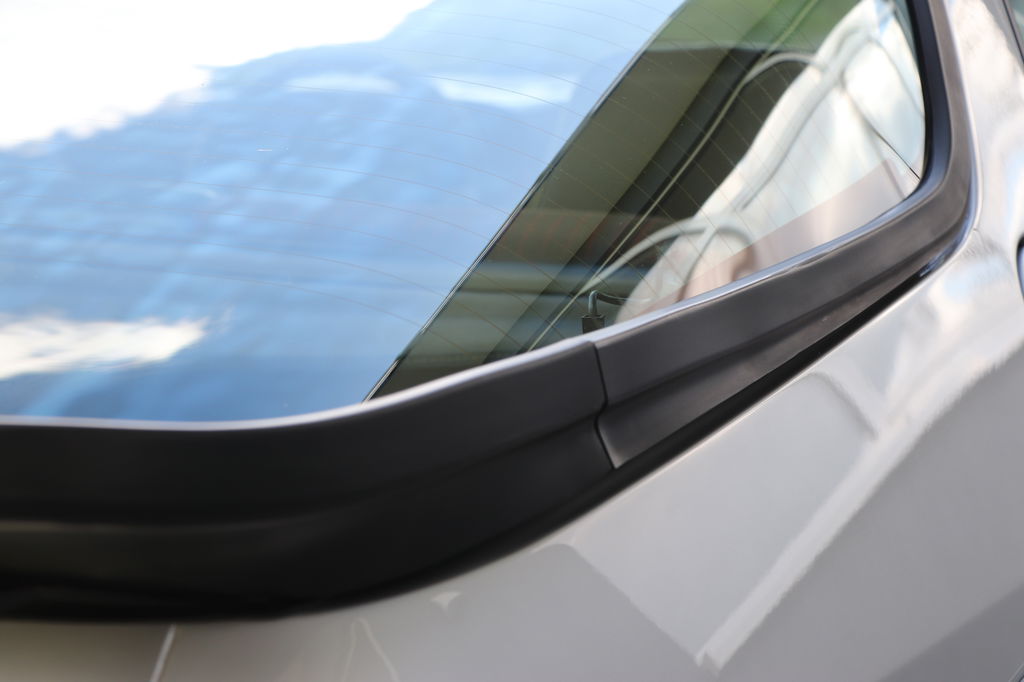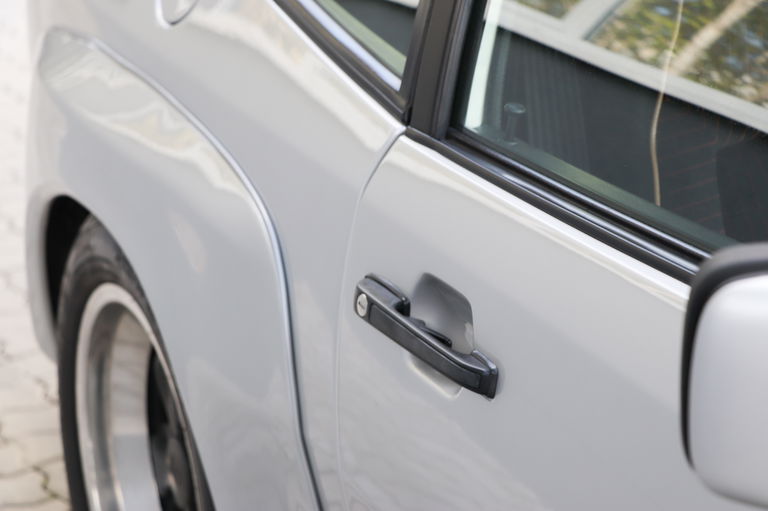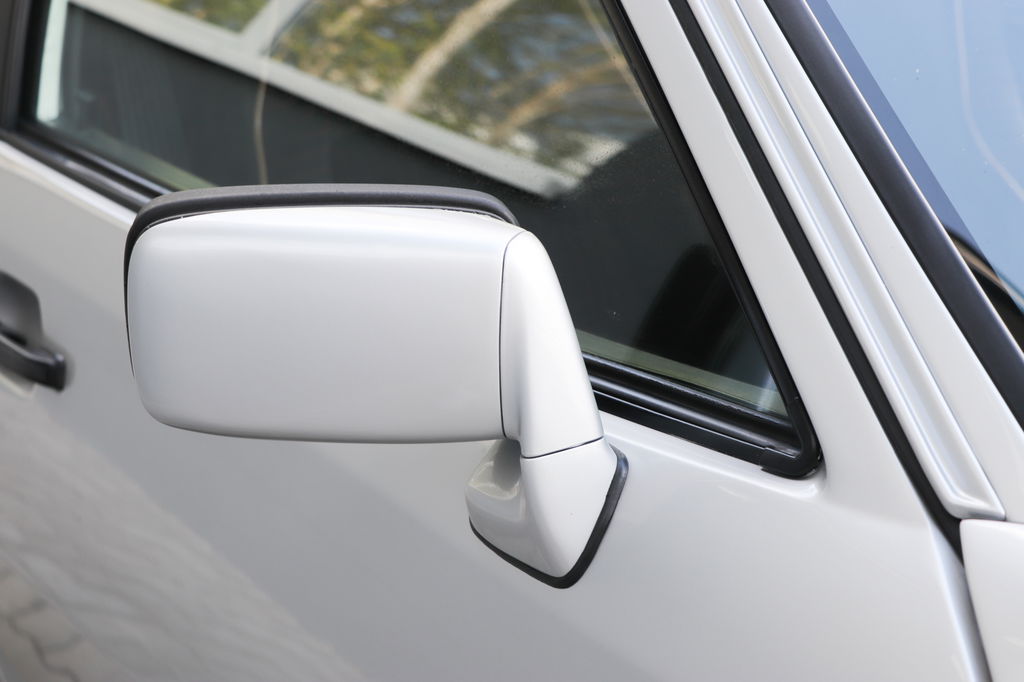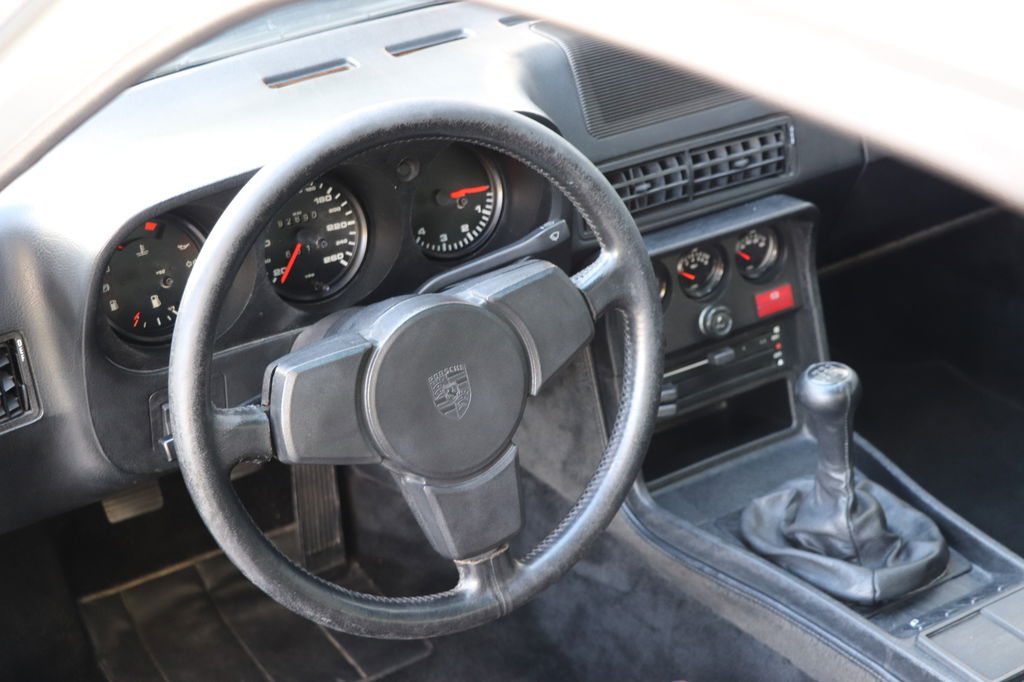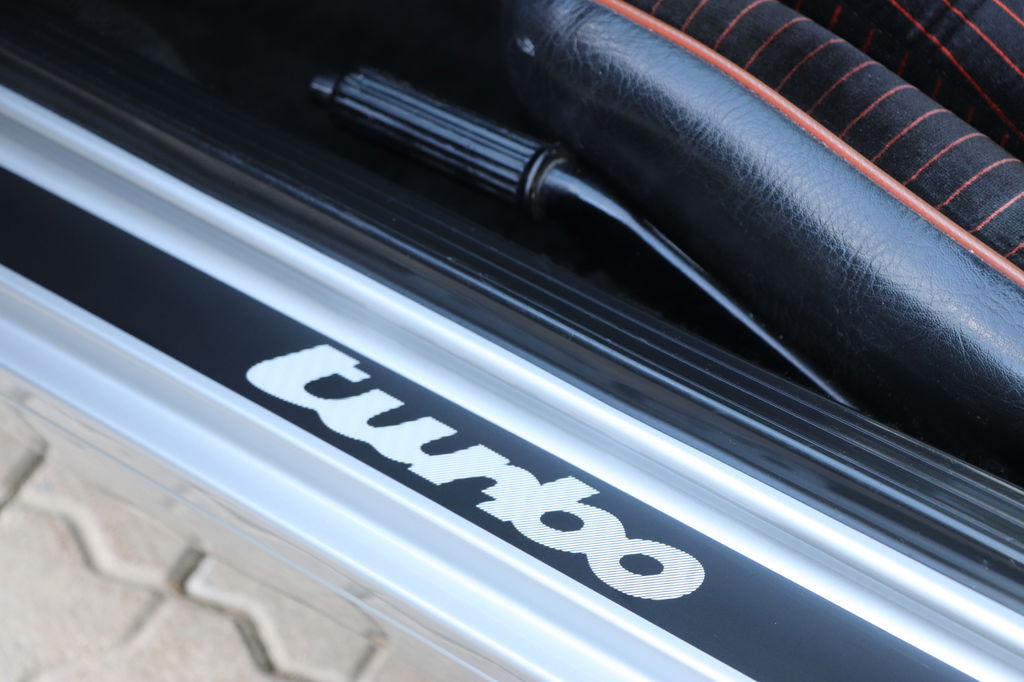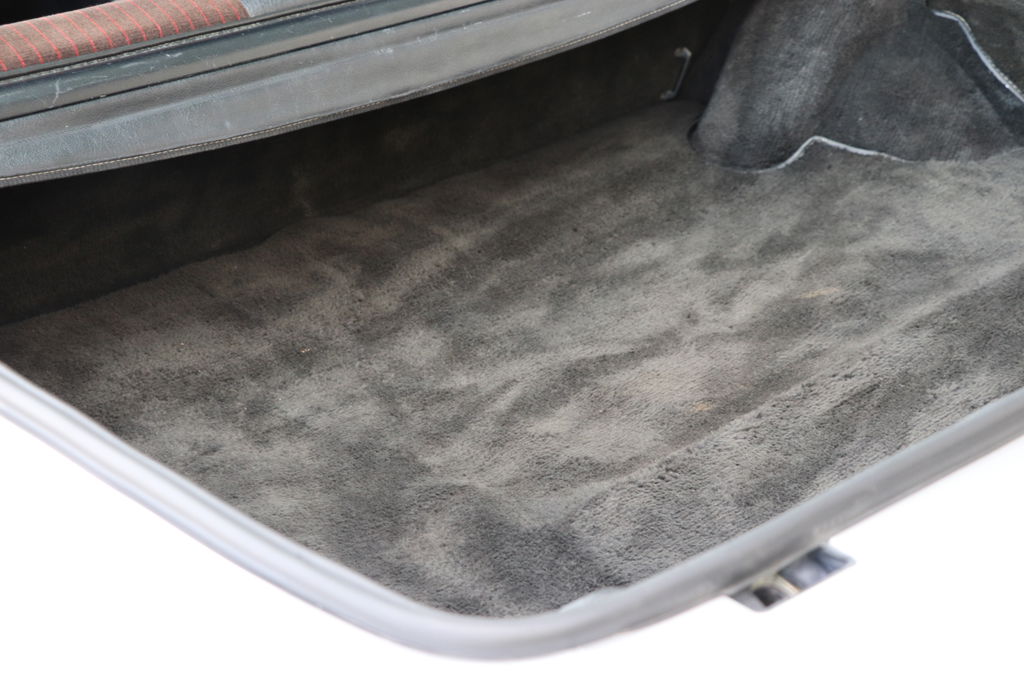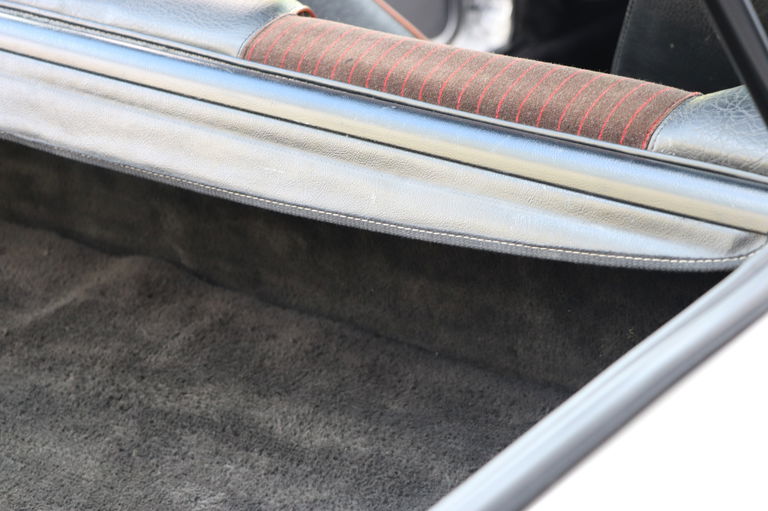The explosion comes at just under 4,500 tours. Suddenly the arms become long. The steering wheel tries to wriggle out of your hands, the back of your head sticks to the headrest and the pupils become wide, very wide. This is what a four-cylinder turbo feels like when it is not roaring behind the driver in the Porsche 718. If it wasn't from 2016, but from the 1980s. The country road is GT territory: the seat with the black and red pinstripe fabric feels just a few centimeters above the asphalt. It wags neutrally through the curves, hardly prances with the rear and hardly leans to the side. The deeply built-in four-cylinder and the gearbox on the rear axle ensure good weight distribution.
Visually, the 924 Carrera GT with front fenders and fender flares on the rear axle as well as the front bumper with front apron made of polyurethane (PU) with 20% glass fiber is both lighter and more resistant to rust and generally offers more stability. The thinner glazing has further reduced weight and the larger rear spoiler has reduced lift.
The Porsche Carrera 924 GT is a special model limited to 401 pieces, which in 1981 was only available in three colors: red, silver and black. Around 200 of these were delivered to so-called special customers in Germany. This car is number 87 and was delivered in the color diamond silver metallic on January 23, 1981 by Porsche in Dortmund. A total of three previous owners are documented, the first vehicle registration is still available. The car was serviced in the delivery company until 1986. From this point in time, maintenance invoices are mostly available from Porsche centers up to the current point in time and document the maintenance and collector's condition just like the original checkbook with complete on-board folder. Most recently, the car was subjected to a complete overhaul with major maintenance in June 2020 and, among other things, technically revised in a specialist workshop specializing in transaxles. In addition, the vehicle received a new paint job in the original color at the beginning of 2021, with all original PU / fiberglass add-on parts being overhauled and perfectly adapted. A new general inspection has been carried out and new tires have already been fitted. The car can therefore be used immediately. The vehicle comes from a renowned collection of rare limited special models. This model is therefore suitable for collectors and hobby enthusiasts as well as rally drivers for historical races who are looking for an adequate vehicle that is certainly unique in the field of drivers and that will attract attention.
In addition, the service documentation for this vehicle is traceable and the original vehicle registration document with the three entries is available in addition to the on-board folder. The original checkbook, as well as the complete set of keys, is part of this complete package as it was when it was delivered.
Conclusion: This Porsche 924 GT is a rare German vehicle in the color diamond silver metallic with traceable prior ownership and third-party history. Not least because of the maintenance intervals observed at Porsche and the last major service and technical revision this year, it is a very well-maintained and original vehicle. This special model, limited to 400 pieces, is currently still an undervalued collector's item that will develop its enormous potential in the next few years.
Vehicle description:
Vehicle history:
History documented on the basis of the documents and the original vehicle registration document:
On January 23rd, 1981 the first delivery was made by the VAG Autohaus Süd Hülpert (Porsche Center) to the first owner.
Change of ownership on May 26th, 1987 to the second owner who owned the vehicle until 2013.
The ownership change to the third owner took place on December 20, 2013.
After the restoration, only 800 kilometers were covered.
The documented total mileage is 192,500 km.
Maintenance history:
The vehicle maintenance is documented by the original checkbook and workshop invoices. The vehicle was regularly serviced by Porsche. The engine and transmission have already been overhauled. In 2020 the car was subjected to a complete technical overhaul in a Munich specialist workshop specializing in transaxle models (Gerhard and Tobias Rau in Krailing) and is therefore in an extensively maintained and well-kept condition. At the beginning of 2021, the vehicle was completely painted in the original color in a special company. All original add-on parts made of PU / fiberglass are completely preserved and have been revised as part of the restoration.
Vehicle condition and assessment (based on the knowledge and statements of the vehicle owner, as well as a clear assessment):
Overall impression: Generally few signs of wear. Original interior with slight signs of wear on the side of the driver's seat. Very well cared for and maintained throughout the Porsche Center, among other places.
Paint / body: Very well-kept general condition, no rust or previous damage recognizable. The PU / GFK add-on parts are in their original, overhauled condition. Due to the complete painting at the beginning of 2021, the body and the paint are almost as good as new.
Decorative strips: Hardly any signs of use.
Rubbers and seals: as good as new, hardly any signs of wear.
Interior: Very good condition, seats with no visible damage, cheek with signs of wear on the driver's seat, rear seats in perfect condition.
Technology / electrics: All functions checked – no defects at the time.
Chassis / steering: Without abnormalities.
Brakes / tires: Without impairment. Tires new from July 2018 (95% profile).
Engine / gearbox: Flawless during the test run and test drive, no abnormalities, no oil loss found. According to the documents, the engine and transmission were revised about 10,000 km ago.
Underbody: No visible damage.
Exhaust system / heat exchanger: Specially made for this model for long-term stability.
Model history:
924 Carrera GT type 937 (1981)
The prototype of the Porsche 924 Carrera GT (factory code 937) was presented at the 1979 IAA in Frankfurt. It was intended to underline the capabilities of the 924 and at the same time give an outlook on the body shape of the planned Porsche 944.
The basis of this sports car was the 924 Turbo with the 2-liter four-cylinder engine. In order to increase the engine output, the engine received lighter forged pistons, hardened camshafts and a revised cylinder head with a compression increased from 7.5: 1 to 8.5: 1. The maximum boost pressure of the KKK turbocharger was increased to 0.75 bar and an additional intercooler was installed.
The engine was controlled by a so-called Hartig ignition, which increased performance and also kept fuel consumption relatively low at around 9.1 l per 100 km. In this version, the engine developed 154 kW (210 hp) at 6000 rpm. The top speed was 240 km / h and it took the vehicle 6.9 seconds to accelerate from zero to 100 km / h.
A revised gearbox was installed to match the engine output, and a limited-slip differential could be added on request. To save weight, the Porsche developers resorted to motorsport and gave the car a new, lightweight exhaust system. The Carrera GT had forged 7J × 15 Fuchs rims and 215/60 VR 15 wide tires as standard. For a surcharge, larger wheels with the rim dimensions front 7J × 16 with 205/55-VR-16 tires and rear 8J × 16 with 225/50-VR-16 tires could be ordered instead. The brake system with internally ventilated disc brakes was taken from the Porsche 911 Turbo 3.3.
The body of the car had widened fenders made of glass fiber reinforced plastic (GRP) at the front and rear. While the front fenders were harmoniously integrated into the lines and already had the shape of the 944, the rear fenders were attached. The front apron, the side skirts and the air scoop on the bonnet were also made of GRP in order to keep the vehicle weight low at 1180 kg. The windshield was glued flush with the body in order to maintain the drag coefficient of 0.34 despite the flared fenders.
The interior largely corresponded to that of the 924 Turbo and contained a three-spoke leather steering wheel, a leather gear knob and sports seats and door panels covered in black and red pinstripe fabric. Many extras were available as special equipment, such as B. an alarm system, a car radio, electric windows, electric mirror adjustment, air conditioning, etc. can be selected. The basic price for the sports car was around DM 60,000.
The Porsche 924 Carrera GT was only built in 1981 in an edition of 400 copies, 200 of which were sold in Germany. Since the vehicle did not meet the strict emissions regulations in the USA, it was not allowed to be sold there. With the six prototypes together, there is a total of 406 Carrera GTs built.
The car served as the basis for the development of the racing car models Carrera GTS, GTP and GTR, which were successful in races in the sports car world championship such as B. were used in the 24-hour race of Le Mans.
Technical details:
Engine: 4-cylinder in-line engine with turbocharging
Displacement: 1,984 cc
Power: 210 hp at 6,000 rpm
Max. Torque: approx. 280 Nm at 3,500 rpm
Transmission: 5-speed manual transmission
Drive: rear-wheel drive, transaxle construction
Length / width / height: 4,230 / 1,735 / 1,275
Weight: approx. 1,180 kg
Sprint 0-100 km / h: 6.9 s
Top speed: 240 km / h
Special equipment:
398 exterior mirrors for driver's side -plan- electrically adjustable and heated
567 windscreen with green wedge
573 air conditioning
974 trunk cover





